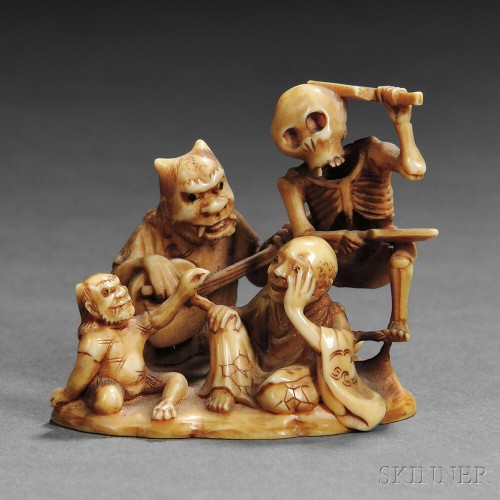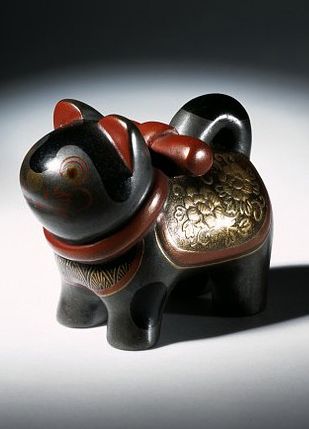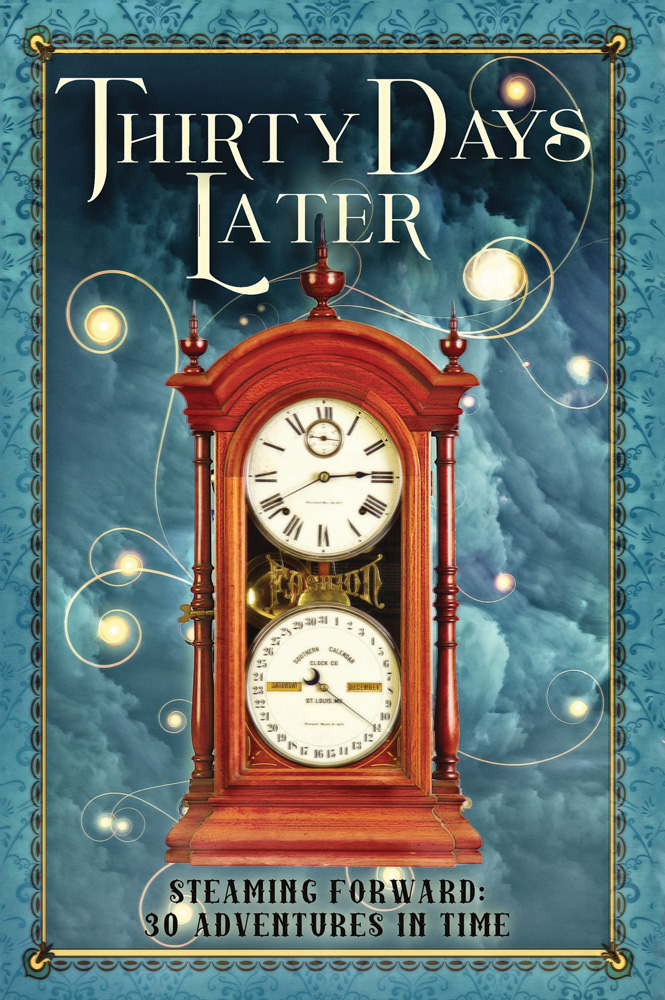by Lillian Csernica on April 16, 2018

pinterest.com
In the Tokugawa period, yokai became very popular in ink paintings, woodblock prints, and carvings, especially the small and useful carvings known as netsuke. They were the must-have fashion accessory, so to speak.
A netsuke will play an important role in one of Dr. Harrington‘s upcoming adventures. Given that he keeps attracting the attention of the gods and monsters of Japan, it seems reasonable to expect the netsuke to be carved in the shape of something supernatural.
From the Metropolitan Museum of Art:
From the seventeenth through mid-nineteenth centuries, Japanese citizens of all classes wore the kimono—a simple T-shaped robe constructed with minimal cutting and tailoring—wrapped around the body and held in place with an obi sash. In order to carry small items such as tobacco, medicine, and seals, ingeniously constructed sagemono (a collective term for “hanging things”) were suspended on cords that hung from the obi sash (29.100.841). Stacked, nested containers, known as inrô, were specifically designed to hold medicine or seals (10.211.2081). Netsuke served as anchors or counterweights for inrô and sagemono (14.40.843a,b). A single cord was threaded through a cord channel on one side of the suspended container, through two holes (himotoshi) in the netsuke, then through the other side of the container, and knotted on the underside of the container (JP1954). A decorative bead, or ojime, slid along the cord between the netsuke and sagemono, allowing the user to open and close the container (14.40.878a,b).

Drawing of a man wearing an inro suspended with the help of a netsuke and held together with an ojime. (Wikipedia.com)

pinterest.com
Netsuke are made from a dazzling variety of materials.

A skeleton beating on a fish drum. Made from narwhal tusk. (pinterest.com)

japaneseaesthetics.tumblr.com
Two of the most commonly used materials for netsuke were ivory and wood, with boxwood favored for its fine grain and durability. About 80 percent of surviving antique netsuke were carved in various types of native Japanese wood—cypress, cherry, black persimmon, yew, camphor, zelkova, and camellia. Elephant tusk ivory was one of the most popular materials for netsuke carvers for centuries (10.211.1444). With the enactment of international trade restrictions on elephant ivory in 1989, however, netsuke carvers turned to other sources, including fossilized mammoth and walrus tusks. Extant eighteenth- and nineteenth-century netsuke made of or inlaid with coral, shells, metals, ebony, porcelain (91.1.213), cloisonné,mother-of-pearl, and various nuts attest to the skilled carvers’ ingenuity in conveying the plasticity of these materials, despite their hardness and resistance to wear (10.211.780).

A fox spirit pretending to be a priest. Made of wood. (pinterest.com)
The nure-onna, a monster with the head of a woman and the body of a snake. This one has a monkey on her back.

Pumpkin, 19th Century, Hirado ware. Porcelain with blue glaze.






















Never even knew this things existed… and they are so beautiful! Love the fox and the pumkin ones.
LikeLiked by 1 person
Aren’t they great? Such a variety! Another popular subject produced erotic netsuke. It just boggles the mind, trying to imagine how the artists carved some of those!
LikeLike
Interesting, Lilian. I love the images, enjoyed reading your notes on all. Couldn’t look away from monster with the head of a woman and the body of a snake. The power of magic, maybe. Also the blue porcelain. Such talent … and inspiration.
LikeLiked by 1 person
Thank you, Silvia. Japanese culture fascinates me. I have a small collection of netsuke, mostly kirin, which look like shaggy unicorns.
LikeLiked by 1 person
I really like the skeleton beating on his drum. That’s a musician’s pose in any culture…so expressive!
LikeLiked by 1 person
There are a lot of skeleton netsuke. You could build quite a collection!
LikeLike